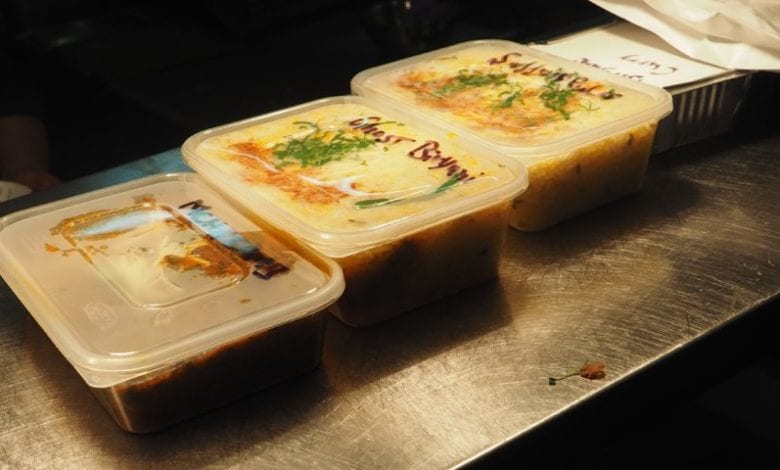Embracing the disruption – the rise of delivery

Register to get 1 free article
Reveal the article below by registering for our email newsletter.
Want unlimited access? View Plans
Already have an account? Sign in
The rise of delivery is shaking up the restaurant industry. Working closely with key operators in the sector, to understand their response to shifting consumer behaviour and advances in technology, Pragma has weighed up the operational challenges of delivery, and considered what the future holds.
Market Dynamics
With operators facing unprecedented external pressures – spiralling business rates, labour costs, COGS, rising rents and market saturation – trimming estates trumps opening new locations. UK outlet growth now concentrates around ‘fast-casual’ or ‘grab and go’; Five Guys and Subway continue to appear on high streets. For most, however, rapid cookie-cutter roll-outs are are a thing of the past. Today’s operator focuses on defining a differentiated, consistent product, and reaching customers through a range of channels.
The Changing Consumer
Consumer behaviour has transformed. Today’s diner is innovation hungry, time-poor, digitally embedded, convenience-led and experience-focused. Missions, priorities and mindsets are also different. Eating out is driven by occasion, with the customer buying the experience in its totality – from quality through to atmosphere. For delivery, however, we see priorities shift to ease of ordering, speed, food that travels well and still tastes good, attractive and effective packaging.
The Rise of Delivery
Food delivery was a latent force waiting to disrupt. As a late adopter in channel diversification, the sector has been playing catch-up to meet customer demand. This has affected the competitive positioning of traditional takeaway players – Indian, Chinese, pizza – as they come under pressure from a plethora of delivery alternatives.
Technology has been the catalyst, driving uptake via mobile platforms and digital marketing. Aggregators, like Just Eat, provide a digital ordering facility to independents and brands who would otherwise have a limited online presence, while full service delivery platforms, like Deliveroo and Uber Eats, open up new channels and logistics solutions. The consumer wants choice and convenience – to place an order online or through an app, and to receive a restaurant-quality meal at home.
Our research shows too that delivered food is an increasingly important feature of urban living. Uptake is highest in the capital, but is becoming more widespread across the UK, with over 50% of those surveyed claiming to have used a delivery platform when ordering in the last 12 months.
The path ahead?
For operators, the rise of delivery platforms has helped ease softening sales, driving the top line as well as broadening reach. At the same time, it is reshaping restaurant business models and influencing the underlying economics. So, what does it mean for operators in the day-to-day running of their restaurants?
The sector’s response has been to follow consumer demand ‘indoors’. This means thinking about their channel mix, taking stock of the implications and adapting their models to succeed. Operators need to decide which approaches to integrate into restaurant expansion strategy, so weighing up the costs and benefits of click and collect, takeaway, partnering with a delivery aggregator or running a delivery-only kitchen.
While some are positively embracing the delivery channel, others remain sceptical about the combination of operational headaches and delivery commissions affecting profitability.
Delivery headaches
Partnering for delivery adds a level of operational complexity. Demand peaks for delivery orders and dine-in run in parallel, leaving operations stretched – everything from kitchen capacity and space allocation through to driver access and packaging. On the shop floor, staff distraction, and the stream of delivery drivers impacts both dine-in experience and brand perceptions.
Sites are now being sought with different criteria in mind – rear entrances for easy delivery driver access have become a key property ‘selling point’, and locations with a high residential population hold greater appeal. The focus is shifting towards fit-for-purpose propositions, incorporating delivery.
We’re seeing restaurateurs reconsider their menu and pricing proposition with delivery in mind, taking into account the need for food that travels well, but more controversially, the balance between portion size and cost, to mitigate the margin impact of the delivery commission.
Alongside this, delivery commissions of c. 20-25%+VAT of sales order have a direct and significant impact on margin. Factor in packaging costs and lower margin sales mix (less wet sales), the overall commercials become less palatable.
Delivery on the side
Despite prevailing concerns, a tough and competitive market means delivery presents potential to grow incremental sales through increased brand awareness and reaching a new customer base, while utilising surplus kitchen capacity. And, because delivery is an increasingly expected part of the offer, operators need to determine how to most appropriately and efficiently bring it into their mix.
For emerging brands, striving to win market share, it will help drive growth through incremental sales and leveraging fixed overheads. For more established players, the question of cannibalisation is very real, and must be managed through channel and estate optimisation to achieve the best outcome.
The future will be led by consumer demand, and enabled by technology. Delivery will continue to grow, and ‘bricks’ restaurants will have to innovate to create differentiated dine-in destinations, in line with the rise of the experience economy. For us, the best operators will remain open-minded and embrace change and progress, constantly reassessing operating models to maximise sales and profit to keep pace.
By Helene Mills, director of Pragma, a strategic partner for operators and investors in consumer markets







